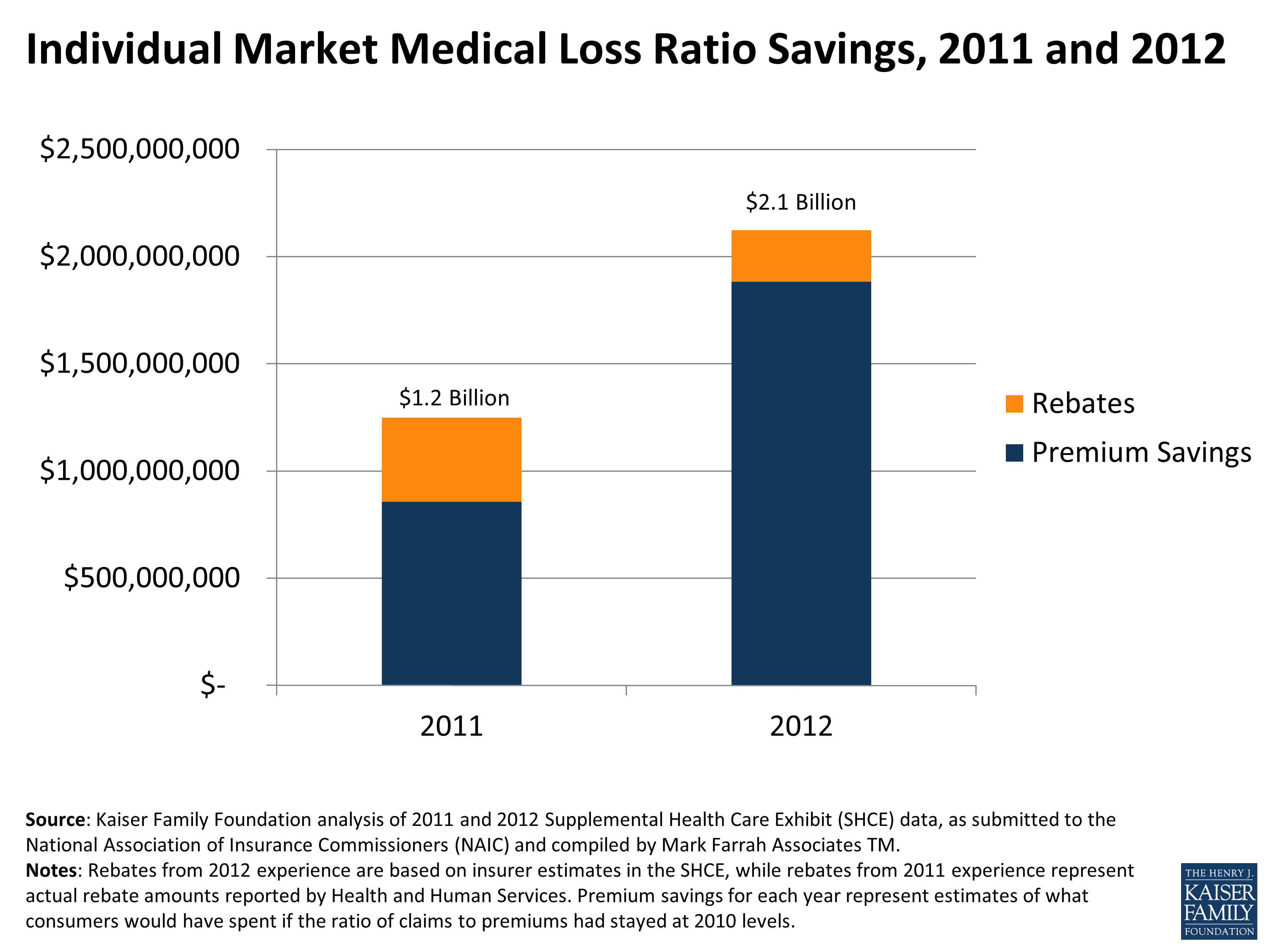Individual plan MLRs rise sharply
KFF analysis shows group segments remain steady while individual segment moves into compliance
More than $2 billion in consumer payments were driven out of the healthcare system last year through medical-loss-ratio (MLR) rebates and premium reductions. Early estimates indicate consumer savings for 2013 will total $571 million, according to the Kaiser Family Foundation (KFF).
The KFF analysis looks at the basic proportion of premiums plans paid out before and after the 80% and 85% MLR provisions went into effect. Weighted average traditional MLRs for the large group and small markets over the past three years remained steady, and most group plans were already meeting the threshold prior to the provision.
The individual segment MLRs, however, rose from 78% in 2010 to 83% in 2012, which indicates that the rule is having the effect desired by regulators. In other words, individual plans are spending more on medical care and less on administration.
MLR provisions went into effect in 2011. Since then, plans are expected to spend 80% of premiums in the small group and individual market on medical care and 85% in the large group market.
For example, in Tennesee alone, Cigna must issue rebates of $92,967 to large group customers and UnitedHealthcare will write checks for more than $1 million for individual policyholders because the insurers failed to reach the prescribed MLRs. Rebates must be issued by August 1.

CareOregon’s Eric Hunter Reflects on Growth, Challenges and Community Commitment
May 30th 2025In a recent conversation with Managed Healthcare Executive, Hunter shared reflections on his tenure, the challenges of expanding impact through partnerships and what he believes sets CareOregon apart from typical insurance organizations.
Read More
Conversations With Perry and Friends: Paul Fronstin, Ph.D.
May 9th 2025Perry Cohen, Pharm.D., a longtime member of the Managed Healthcare Executive editorial advisory board, is host of the Conversations with Perry and Friends podcast. In this episode, his guest is Paul Fronstin, Ph.D., director of health benefits research at the Employee Benefit Research Institute.
Listen
Conversations With Perry and Friends
April 14th 2025Perry Cohen, Pharm.D., a longtime member of the Managed Healthcare Executive editorial advisory board, is host of the Conversations with Perry and Friends podcast. His guest this episode is John Baackes, the former CEO of L.A. Care Health Plan.
Listen
Just Over Half of U.S. Health Plan Members Satisfied With Plan, Study Shows
May 29th 2025This number can be attributed to claim denials, high deductibles and the underutilization of digital tools available within plans, according to the 2025 U.S. Commercial Member Health Plan Study from J.D. Power.
Read More
Combining Avastin With Alecensa Shows Promise in Advanced ALK-Positive Lung Cancer
May 29th 2025A phase 2 trial found that adding bevacizumab to alectinib significantly delayed disease progression, protected against brain metastases, and improved quality of life in patients with advanced ALK-positive lung cancer.
Read More










